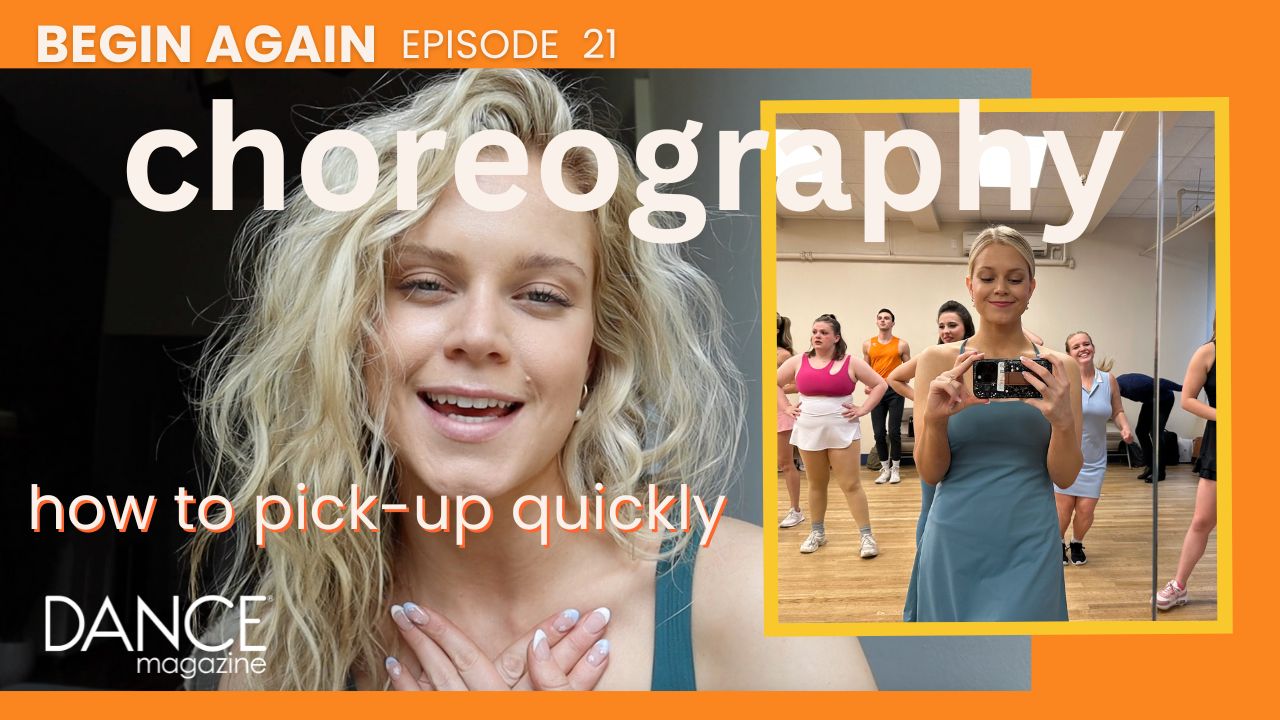Begin Again: How to Pick Up Choreography Quickly
I have this recurring nightmare where I’m in an audition, the choreographer is teaching at lightning speed, and my brain completely shuts down. Each new step slips through my fingers as I try desperately to recall the combo. I wake up in a cold sweat, panic throbbing in my mind like a car alarm.
Though my subconscious fears stem partly from my nine years away from dance because of a chronic illness, I think they’re common among performers. Many dancers struggle when they have to learn fast. And it’s an important skill: Shows often have truncated rehearsal processes, making a dancer who can learn and retain quickly a valuable asset.
How can you train your brain to pick up choreography? I asked Dr. Linda Hamilton, a psychologist who specializes in performance, and Lizz Picini, a New York City–based performer, choreographer, and teacher, to share some advice.
Tip 1: Lower the Stakes
Though fast-paced learning environments can be stressful, Dr. Hamilton recommends maintaining a sense of perspective and viewing the audition as a learning experience. “Don’t label anything as ‘high stress,’ ” she says. “Lower the stakes to reduce anxiety. Otherwise your body will release stress hormones that make it harder to focus and remember. Take your attention back by monitoring your arousal and staying calm.”
Tip 2: Watch, Watch, Watch
To learn faster, hone your powers of observation. “The most important thing you can do is watch the combination before you try to get it into muscle memory,” Hamilton says. “That stimulates the neurons in your brain, like a mental rehearsal.” Of course, there isn’t much time for this in an audition, but if you make a conscious effort to observe the teacher with extra care, and to picture each step in your mind before moving on to the next one, that will help you learn the choreography faster.
Tip 3: Divide the Phrase Into Segments
Hamilton recommends dividing the combination into chunks. “Group the steps together and memorize in segments, so the combination doesn’t become Mount Everest,” she says. “That will help you absorb the phrases.”
Tip 4: Identify Cues
Once you’ve broken up the choreography into segments, Hamilton says to associate each chunk with a memory trigger, or “cue.” “It might be a shift in weight, or an arm movement,” she says. “Make it something personal that goes beyond the teacher’s counts and the music. Doing this will not only help you remember the steps, but will also help with the fluidity in your transitions.” Many natural cues, like shifting weight or changing directions, can feel like throwaway steps. Putting specific emphasis on them makes them more polished and elevates the entire piece.
Tip 5: Go Slow
If there’s any time between learning and presenting the choreography to mark through the combination, Hamilton recommends marking slowly rather than at full speed. “Marking slowly makes you aware of how the movement should feel, allowing it to go into both muscle and mental memory,” she says.
Tip 6: Practice, Practice, Practice
Memory is a skill that takes practice, like any other skill. Picini recommends practicing not just in auditions but also in classes. “We need to flex this muscle by putting ourselves in environments where we need to pick up quickly,” she says. “Build a list of teachers with a diverse approach to teaching combos, so that when you get into the audition rooms, you’re prepared for anything.”
Tip 7: Challenge Yourself
It may seem counterintuitive, but one way to lower the stakes in fast-paced settings is to seek out high-stakes experiences elsewhere. For example, Picini says she is grateful for assistant roles that required her to demonstrate combos for the class immediately after learning the material—before even hearing the music. “It forced me to learn ahead of the game, with an assertive approach,” she says. “You don’t have the option to sink. You gotta swim.”
For more from my interview with Picini, and a look at what these tips look like in action, head over to Dance Magazine’s YouTube channel.




